Hay fork / bundle fork
MOT V 2022.0005 (double) L=59cm WD=31,5cm H=23cm WT=1314gr
The hay fork is a fork with 2 to 3 - sometimes four - round or square, pointed, slightly curved, iron or steel tines (approx. 15-30 cm; spacing: approx. 7-20 cm), which have a straight wooden handle of varying length (approx. 100-300 cm). Sometimes it is also a monoxil fork-shaped branch (1).
The farmer prefers a steel hay fork with two tines, to put the sheaves on the cart at harvest time or to stick it from the cart in the attic. The one with three teeth or the wooden bundle fork is often used to turn the hay (see also the hay rake). There is also a double model with a row of 3 tines at the bottom and a row of 2 tines at the top to collect the hay into bales. [MOT]
(1) Eg. ROBERT: 8-20.
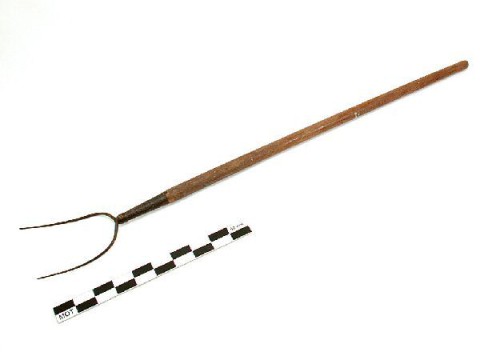
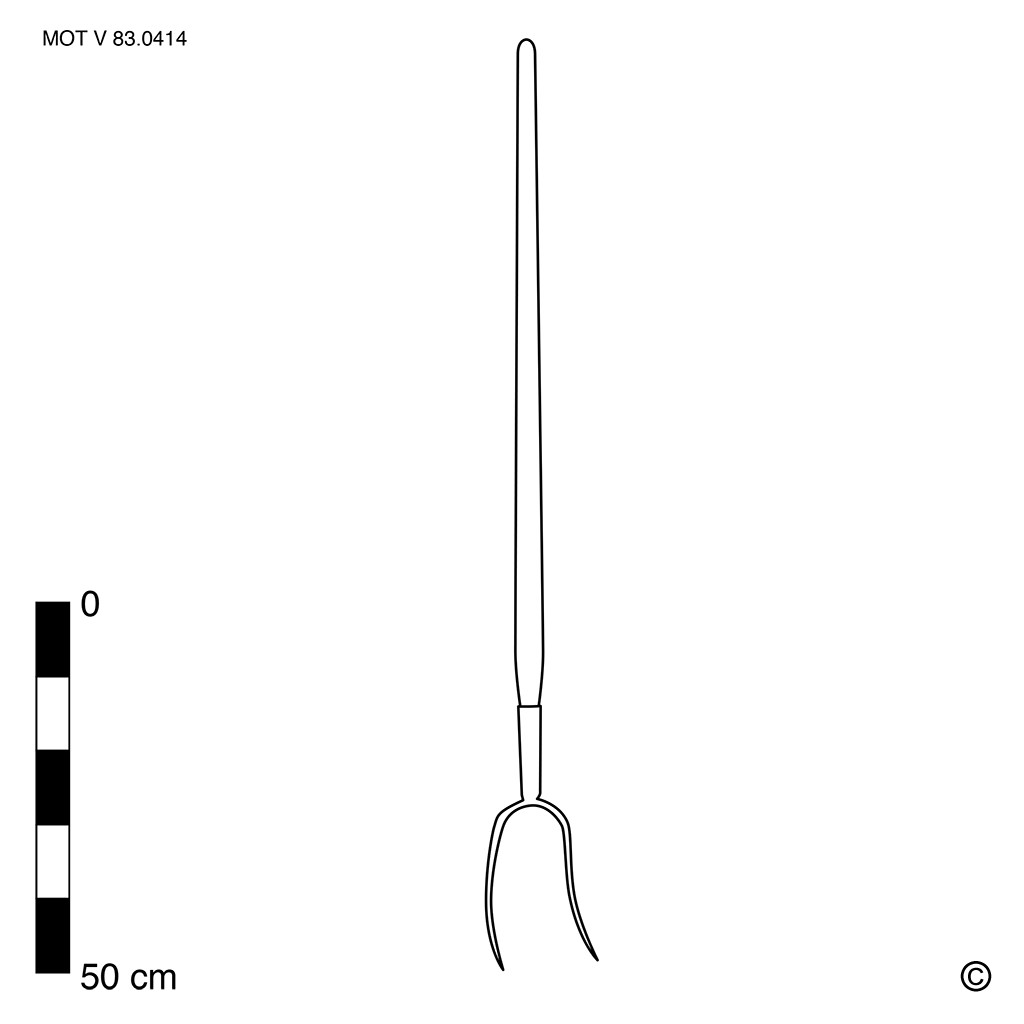
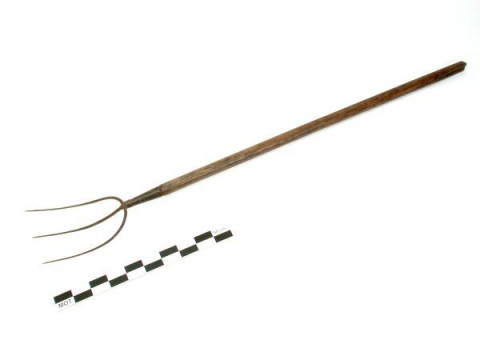
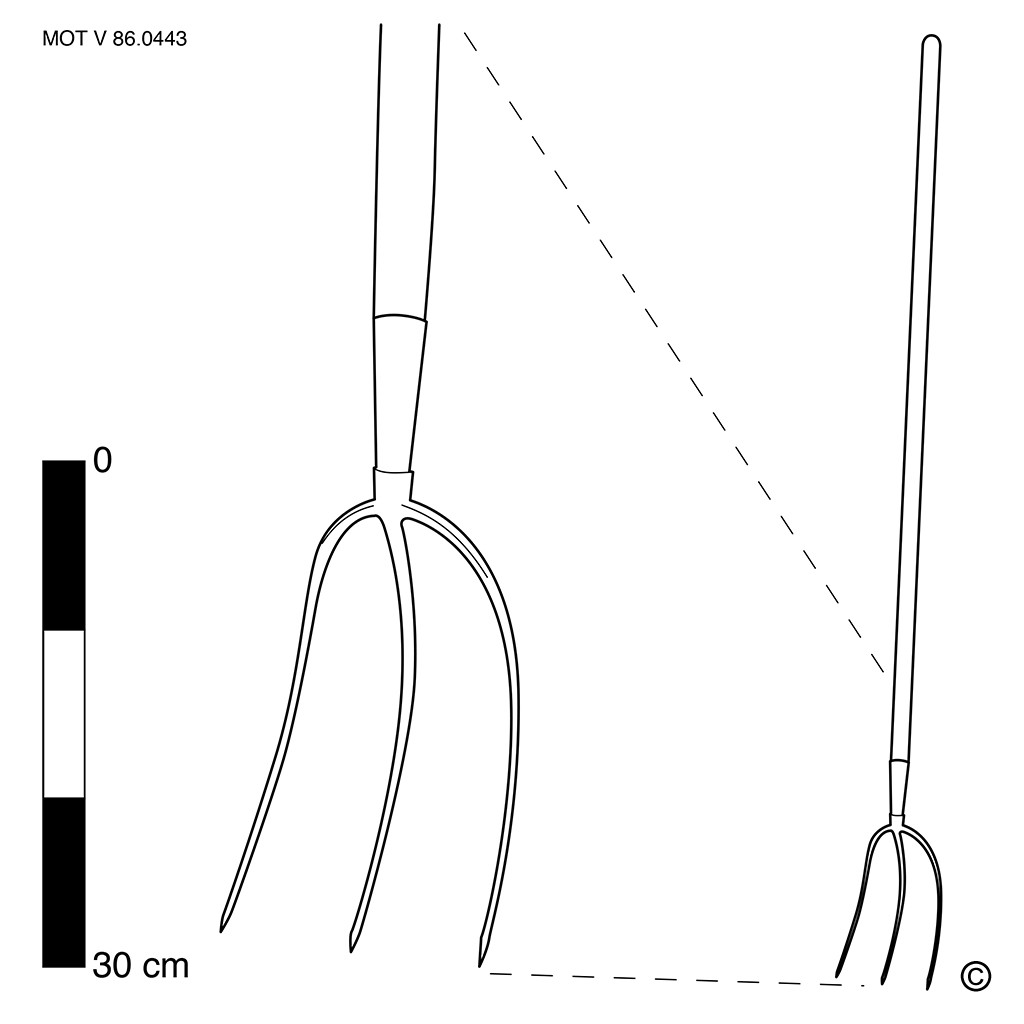
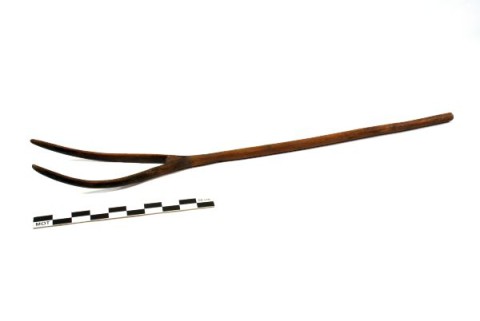
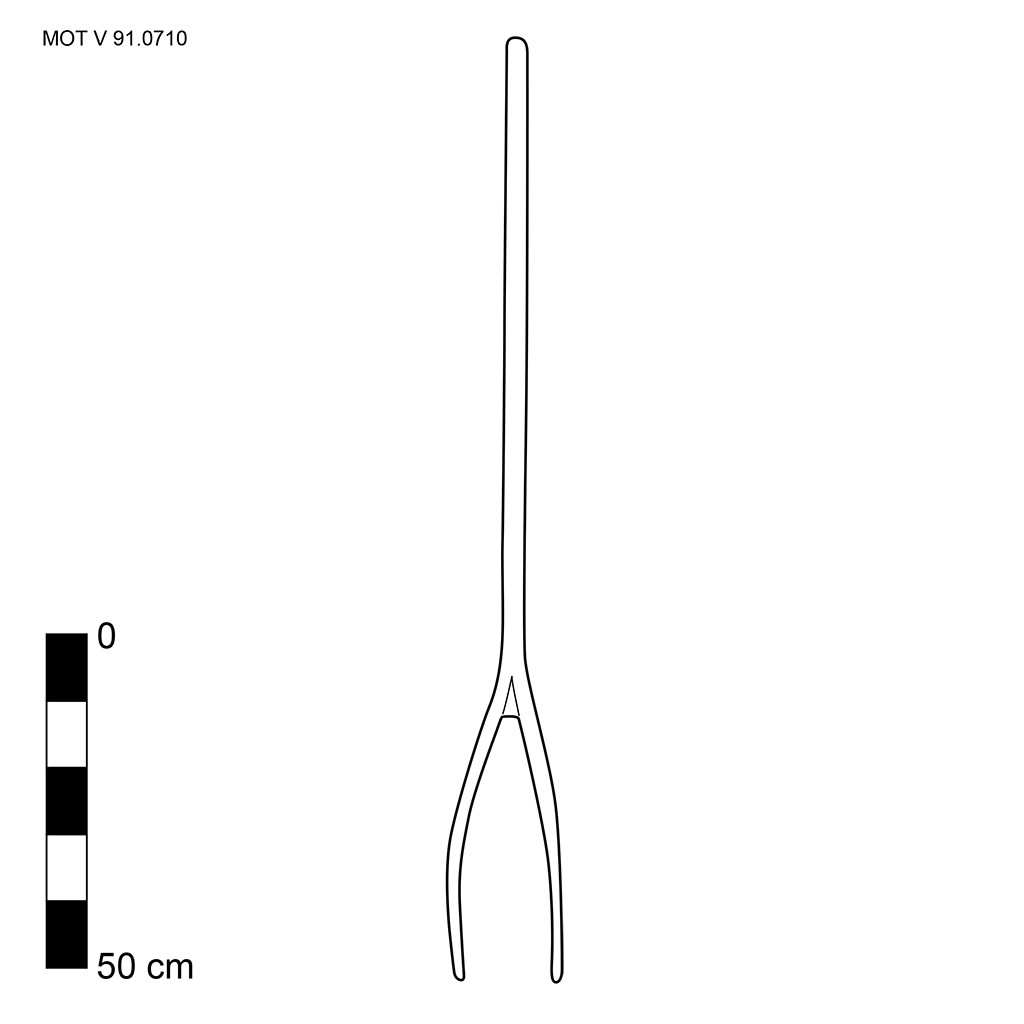
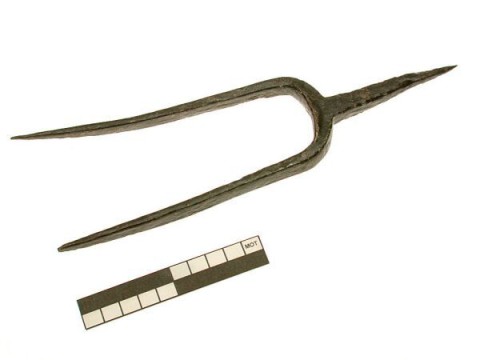
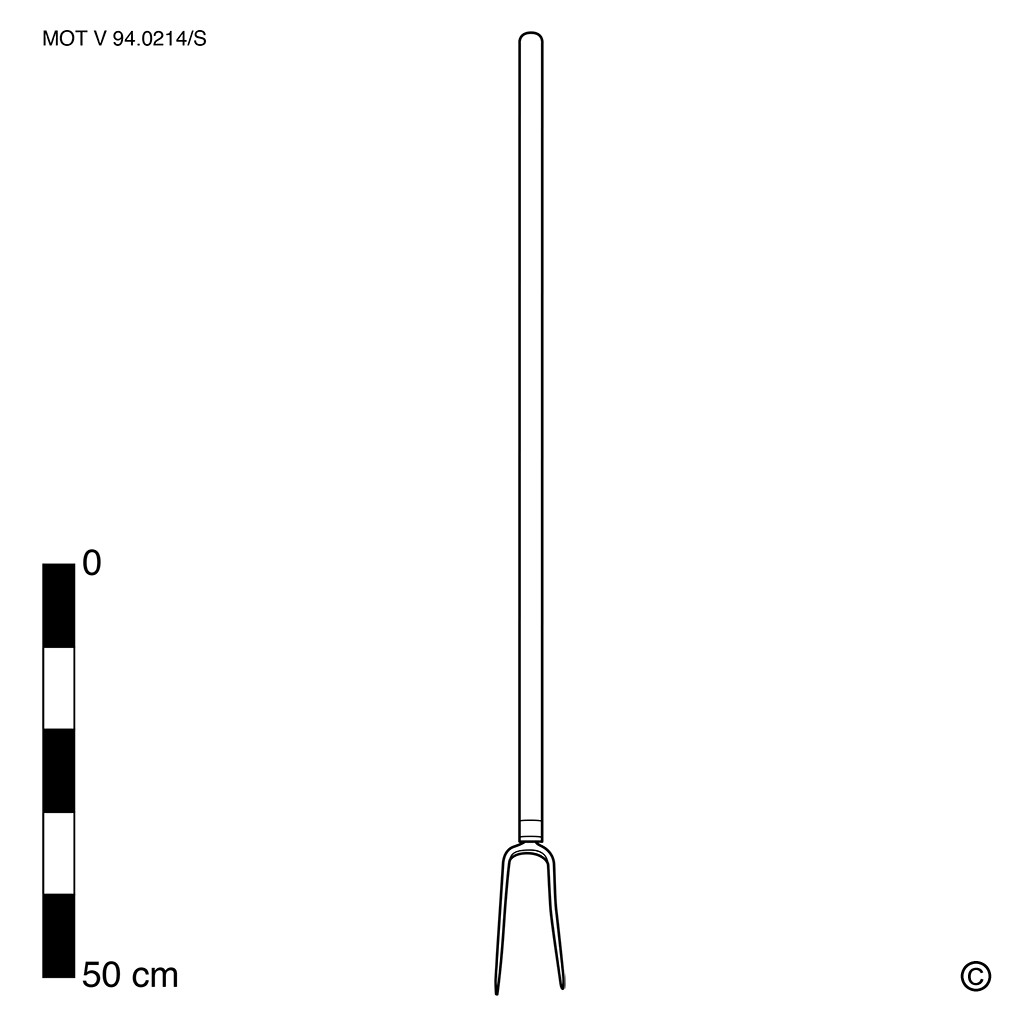
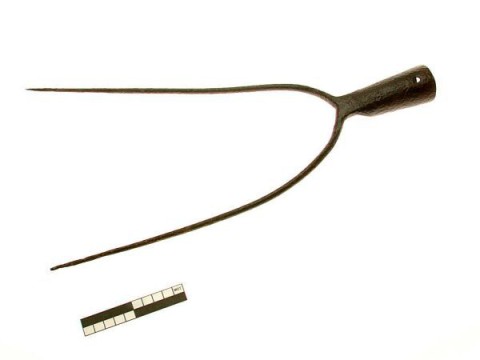
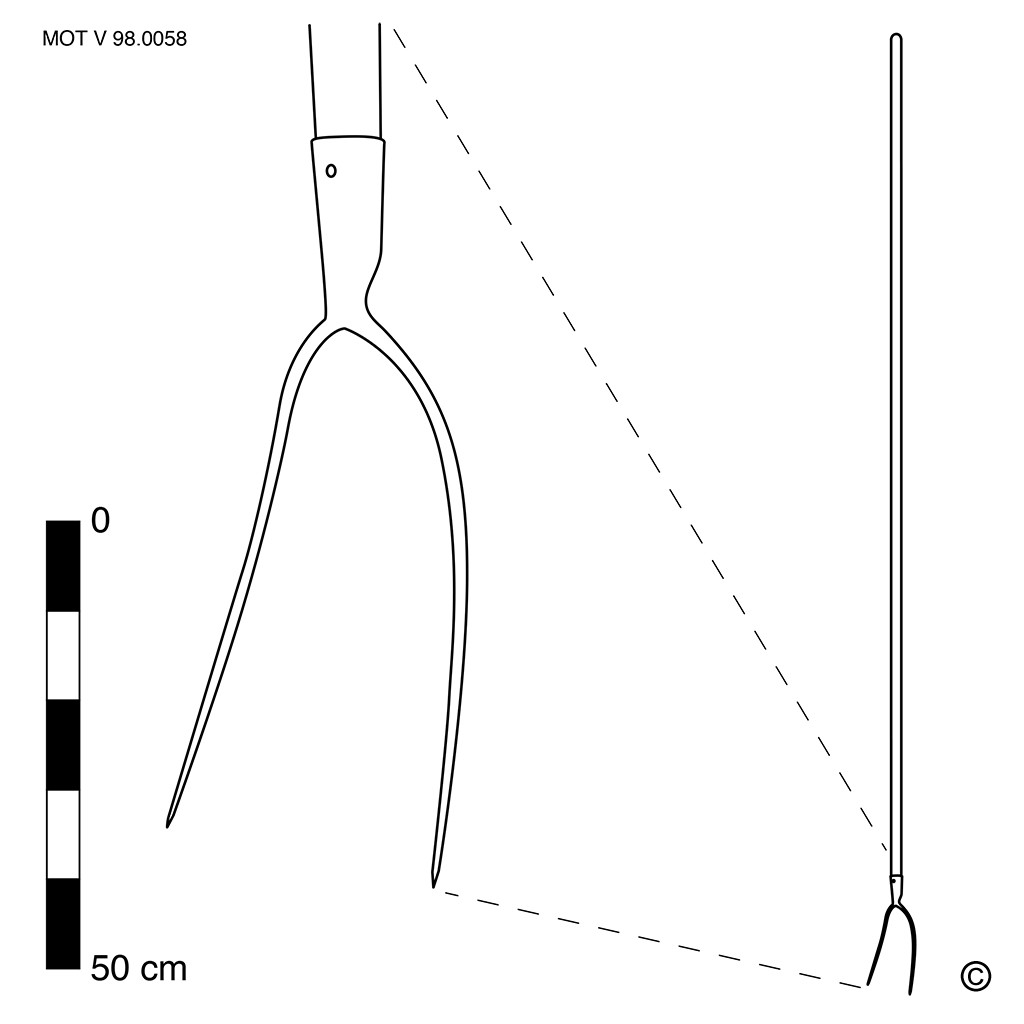
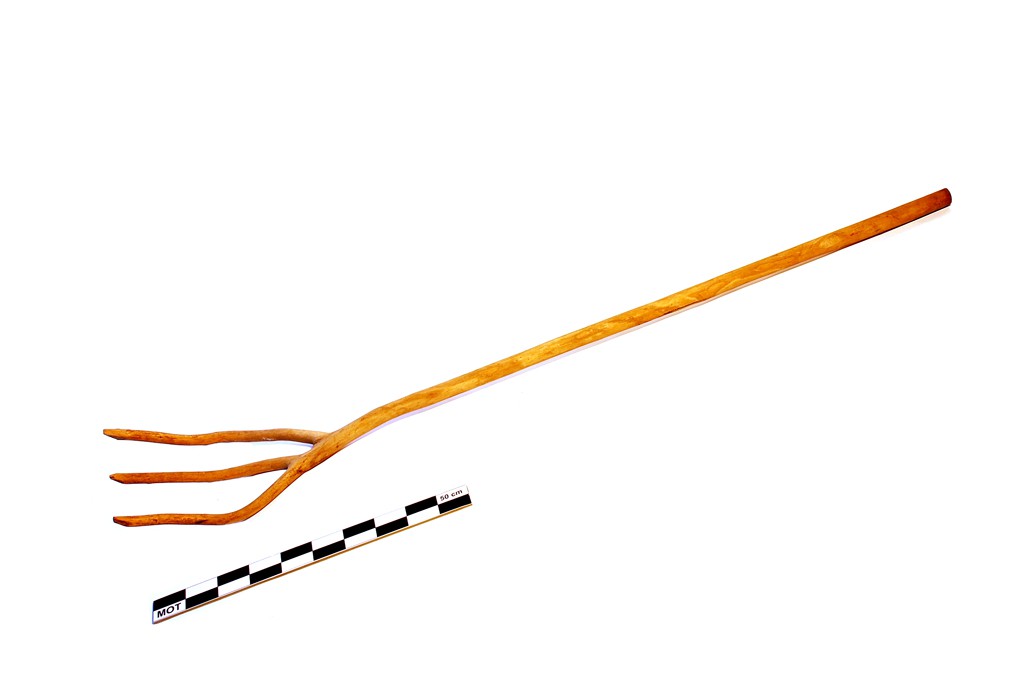
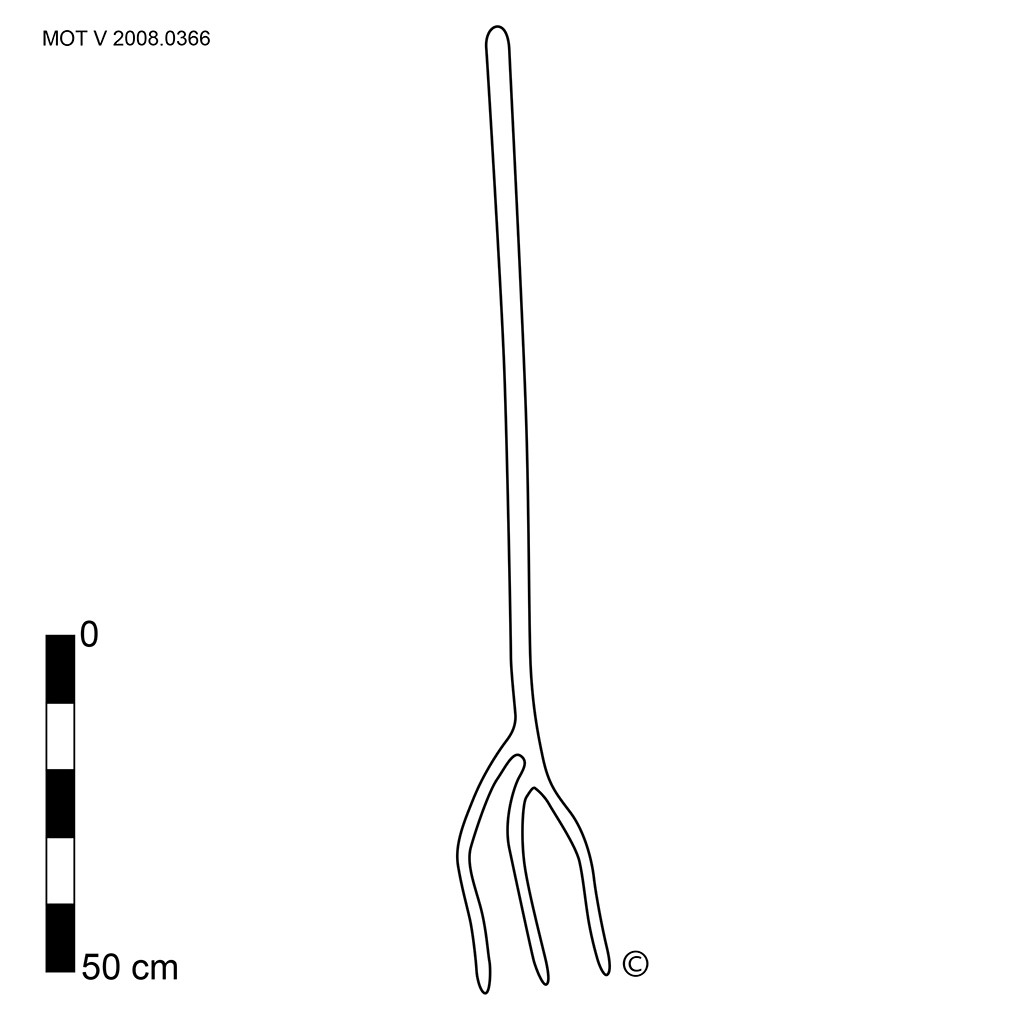
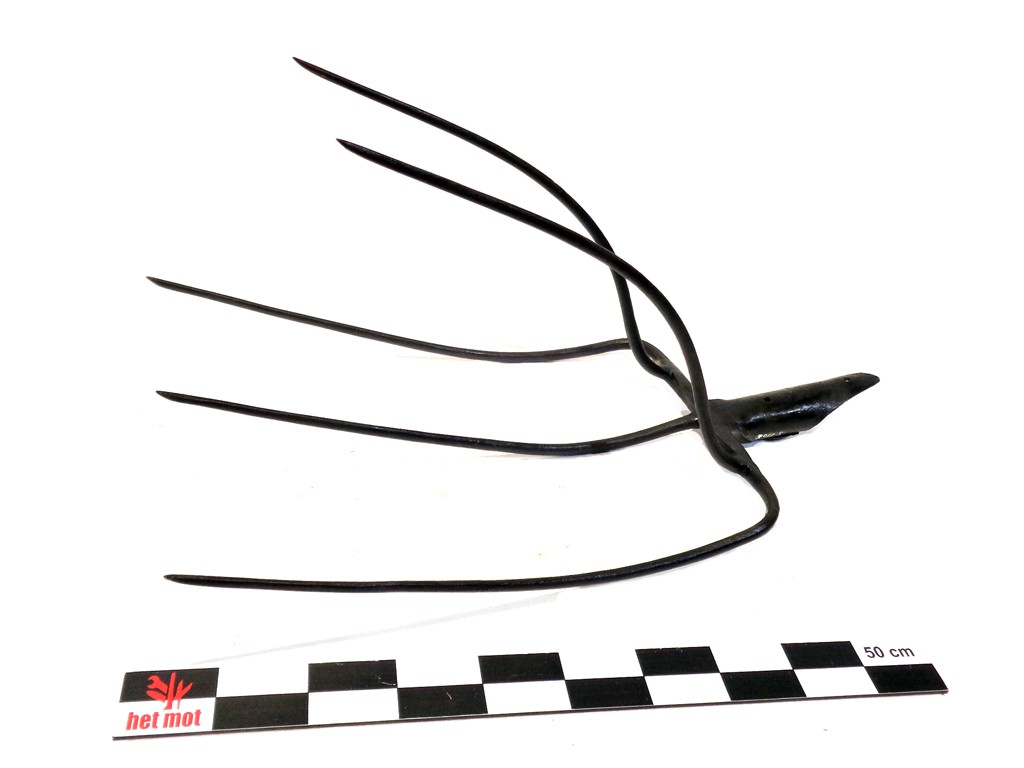
MOT V 2022.0005
